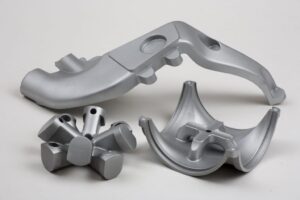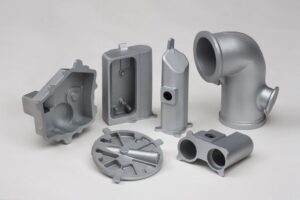Stainless Steel Forging
What is Stainless Steel Forging?
Stainless Steel Forging is a manufacturing process where stainless steel is shaped into desired parts using localized compressive forces, typically from hammers or presses. The metal is heated to a high temperature and then hammered or pressed into a specific die mold. This process aligns the steel’s grain structure, resulting in superior strength, durability, and resistance to impact and fatigue compared to other methods like casting.

Advantages of Stainless Steel Forgings
Forged stainless steel components offer numerous benefits. They exhibit exceptional mechanical properties, including high tensile strength and excellent impact toughness. The forging process also refines the material’s microstructure, enhancing its corrosion resistance—a key trait of stainless steel. Furthermore, forgings are known for their reliability, structural integrity, and long service life, making them ideal for critical applications in harsh environments.
The Forging Process
The stainless steel forging process typically involves several key steps: 1) Heating the raw material (billet or bar) to a precise temperature in a furnace. 2) Placing the heated metal into a die on a forging press or hammer. 3) Applying immense pressure to shape the metal, causing it to flow and fill the die cavities. 4) Trimming off any excess flash material. 5) Often followed by secondary operations like heat treatment, machining, and surface finishing to achieve the final dimensions and properties.
Key Benefits of Forging
The primary benefits of forging include part consolidation, improved structural integrity, and grain flow continuity. Forging eliminates internal voids and gas pockets, creating a more homogeneous structure. This leads to greater fatigue strength, enhanced reliability under high stress, and better wear resistance. The predictable and uniform mechanical properties across the entire part are a significant advantage for engineers.

Industry Applications of Stainless Steel Forgings
Forged stainless steel parts are vital across numerous industries. They are used in the automotive sector for engine components and valves, in aerospace for landing gear and turbines, in oil & gas for valves, fittings, and wellhead equipment, in chemical processing for pumps and reactors, and in power generation for turbine blades and fasteners. Their strength and corrosion resistance make them indispensable where failure is not an option.
Forging vs. Casting: Why Forging is Superior
While both are shaping processes, forging is often superior to casting for critical applications. Forgings are generally stronger and more ductile because the forging process refines the metal’s grain structure. Castings can contain hidden internal defects like porosity and inclusions, whereas forgings have a more sound internal structure. Forged parts also typically have better fatigue life and impact resistance, making them safer and more reliable for high-stress environments.
Custom Stainless Steel Forgings According to Your Requirements
We specialize in providing custom stainless steel forgings tailored to your specific needs. Our engineering team works closely with clients to design and manufacture forgings that meet exact dimensional, mechanical, and application requirements. From prototype development to full-scale production, we ensure the final product delivers optimal performance, quality, and value for your project.
